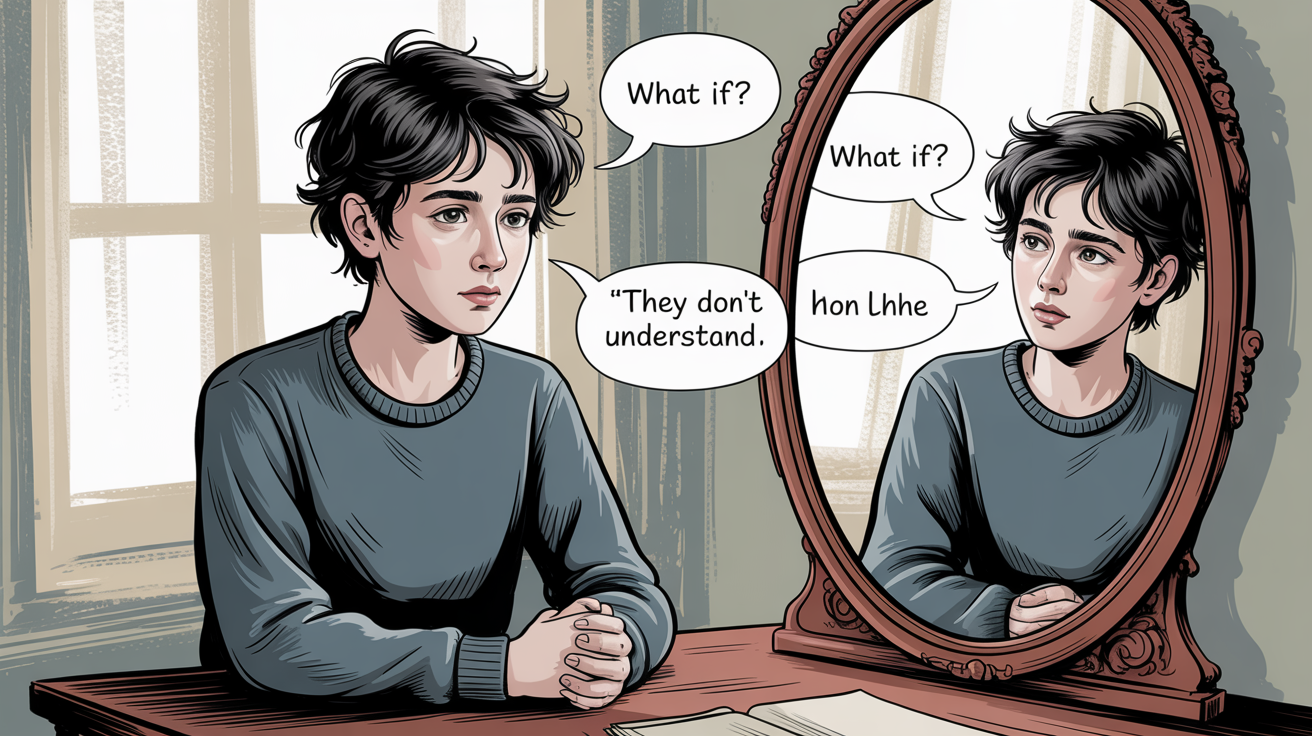Have you ever wondered why two people can watch the same film and come away with completely different opinions? Stuart Hall’s Encoding/Decoding Model explains exactly that, how our social, cultural, and ideological positions shape the way we understand media.
Let’s break it down further,
What is Encoding and Decoding in Media?
Encoding (Producer’s Side)
When media producers create content (like news, TV shows, or ads), they encode messages using symbols, language, images, and narratives. These are shaped by:
- Ideology
- Culture
- Institutional goals
- Audience expectations
Decoding (Audience’s Side)
Audiences don’t just absorb media passively. Instead, they decode it based on:
- Cultural background
- Personal experiences
- Social positioning
Hall’s Three Decoding Positions
1. Dominant (Hegemonic) Position
- The audience fully accepts the intended message.
- There’s a shared ideology or context.
📌 Example: Middle-class viewers agree with a documentary praising economic reforms they benefit from.
2. Negotiated Position
- The audience understands the message but partially accepts it.
- They tweak it to fit their own beliefs or life experiences.
📌 Example: A farmer watching an urban success story may appreciate the theme but feel it lacks relevance to their rural life.
3. Oppositional Position
- The audience rejects the intended message completely.
- This often reflects ideological conflict or marginalization.
📌 Example: A minority viewer may reject a TV show that stereotypes their community, decoding it as harmful.
Case 1: Applying Stuart Hall’s encoding/decoding model to the final episode of Game of Thrones, season 8, titled “The Iron Throne”
Encoding (Producers’ Intent)
- Preferred Meaning:
The episode aims to bring the saga to a dramatic close, resolving major character arcs, and symbolically ending the cycle of violence and power struggles by destroying the Iron Throne itself. The creators intended to show the costs of tyranny, the importance of choosing wisdom and knowledge over conquest (Bran as king), and to provide satisfying endings for key characters like Jon, Daenerys, Sansa, and Arya. - Technical and Symbolic Codes:
- Visual: The destruction of the Iron Throne by Drogon symbolizes the end of the old order and the futility of endless war for power.
- Narrative: Jon’s killing of Daenerys is framed as a tragic but necessary act for the greater good.
- Themes: The episode stresses the power of stories and the need for new forms of leadership (Bran as “the keeper of stories”).
Decoding (Audience Interpretation)
- Dominant (Preferred) Reading:
- Some viewers accepted the episode as a fitting, if imperfect, conclusion. They appreciated the symbolic destruction of the throne, the elevation of Bran as king, and the bittersweet endings for major characters. They found the acting, music, and visuals impressive and felt the story’s themes of sacrifice and new beginnings were well-conveyed.
- Negotiated Reading:
- Other audiences enjoyed the emotional and thematic payoffs but critiqued the pacing, narrative choices, or the logic of certain character decisions (e.g., Jon’s fate, Bran’s selection as king). They accepted the core message but questioned the execution or specific plot points.
- Oppositional Reading:
- A significant number of viewers and critics rejected the episode’s resolutions. They criticized the perceived rushed storytelling, character arcs (especially Daenerys’s abrupt turn and death), and the lack of depth in Bran’s ascension. Some saw the ending as a betrayal of the series’ earlier themes and character development, arguing that it undermined the show’s legacy.
Social and Group Influences
- Interpretative Communities:
- Fan communities, critics, and casual viewers each formed their own interpretative communities, shaping how the episode was discussed and evaluated. Online forums and social media amplified both praise and backlash.
- Reference Groups:
- Long-time fans and those invested in the books often had higher expectations and were more critical, while casual viewers might have been more accepting of the ending.
- Primary and Secondary Groups:
- Family and peer groups influenced individual reactions, with some viewers swayed by the opinions of friends or online critics.
Conclusion
The reception of Game of Thrones’ final episode, “The Iron Throne,” vividly illustrates Hall’s encoding/decoding model. The creators encoded a message of closure, sacrifice, and renewal, but audiences decoded it in diverse ways—ranging from acceptance to negotiation to outright rejection—based on their expectations, values, and social contexts
Case 2: Applying Stuart Hall’s encoding/decoding model to Sandeep Reddy Vanga’s Animal (2023)
Encoding: Producer’s Intended Message
The filmmakers created Animal as a high-energy revenge story filled with strong male characters, focusing on family loyalty, power struggles, and a broken society. Key elements include:
- Narrative Focus: A son’s obsessive quest for paternal validation.
- Technical Codes: Extreme close-ups of violence, stylized action sequences and soundtracks (e.g., Arjan Vailly) to amplify intensity.
- Themes: Masculinity as a “natural” male trait, vengeance as catharsis, and patriarchal power structures.
- Preferred Reading: The film’s marketing (trailers, songs) framed it as a bold, unfiltered exploration of raw human instincts, targeting audiences seeking adrenaline-fueled entertainment.
Decoding: Audience Interpretations
Audience reactions to Animal split into three distinct positions:
A. Dominant (Preferred) Reading
- Acceptance of Intent: Many viewers embraced the film as a “mass entertainer”, praising Ranbir Kapoor’s performance, high-octane action, and dramatic family conflicts.
B. Negotiated Reading
- Partial Acceptance: Some audiences acknowledged the technical craft and entertainment value but critiqued its excessive runtime, gratuitous violence, and shallow female characters.
C. Oppositional Reading
- Rejection of Core Themes: A vocal segment condemned the film for glorifying misogyny, toxic masculinity, and senseless violence.
Social Context and Group Influence
- Interpretative Communities:
- Primary Groups: Family audiences in India often viewed the film through a lens of traditional patriarchal values, normalizing Vijay’s actions as “male entitlement”.
- Secondary Groups: Online forums and critics formed oppositional communities, amplifying debates about gender representation in Bollywood.
- Reference Groups:
- Aspirational Figures: The film’s portrayal of wealth and power resonated with audiences aspiring to elite status, while others rejected it as regressive.
- Cultural Norms: Rural and urban divides influenced reception, with some groups interpreting violence as “entertainment” and others as societal critique.
Conclusion
- Producers encoded a violent, patriarchal narrative as “bold storytelling.”
- Audiences decoded it through their social lenses:
- Dominant: Urban masses and action fans celebrated its audacity.
- Oppositional: Feminist and critical groups rejected its regressive gender politics.
- Negotiated: Casual viewers accepted its entertainment value while acknowledging flaws.
Why Hall’s Model Still Matters Today?
- Encourages us to see audiences as active meaning-makers, not passive consumers.
- Emphasizes the power of ideology and how dominant narratives are sometimes resisted.
- Applies to everything from advertising and news to memes and YouTube videos.
This model transformed audience studies by acknowledging real-world diversity in media interpretation.
Implications for Mass Communication & Media Studies
Stuart Hall’s theory is essential reading for:
- Media and journalism students
- Cultural studies researchers
- Communication professionals
It shifts the focus from “What is the message?” to “How is the message being understood — and by whom?”
Read: Stuart Hall encoding and decoding model and the circulation of journalism in the digital landscape, here
Register now its free. Download the pdf Stuart hall encoding and decoding model and the circulation of journalism in the digital landscape
Suggested links:
Explore – https://www.viralandbeyondacademy.com/category/communication-and-media-studies



